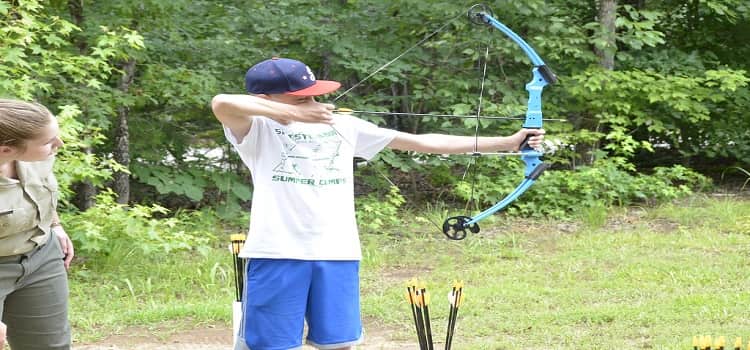Draw weight is the amount of force required to fully draw a compound bow generally measured in lbs. Shooting the correct poundage is critical for achieving the desired kinetic energy. Moreover, you need to maintain an accurate shooting form. If you are confused about how to adjust the draw weight on a compound bow, you are on the right page!
You might be at the beginning point of archery skills and aren’t sure what will work the best for you. In that case, learn about average draw weights based on age and gender. A child’s weight ranges from 20 to 30 pounds, while ladies and older boys ( weigh less than 170 pounds) will need between 30 and 40 pounds.
Men, who weigh between 150 and 200 pounds, require an average of 60 to 70 pounds of the draw weight. On the other hand, those over 200 pounds need up to 100-pounds of draw weight. So, get started and find out the ideal draw weight for you.
Contents
Preparation of Adjusting the Draw Weight
A locking bolt could be used in order to secure the limbs in their current position prior to altering the amount of draw weight. These have most likely been fastened into the riser. They are situated slightly below or above the top or bottom of the limbs. These bolts then must be unfastened before the limb bolts can be adjusted. You can then tighten them again after the adjustment.
We must load or unload extra stress (flex) on either the limb to modify the draw weight; we do this by twisting or releasing the limb fasteners.
If you want to raise the draw weight to your bow’s maximum poundage, you will have to twist the limb bolts at their maximum level. You will have to twist it in a clockwise way. Keep tightening the bolts until both limbs are firm against the riser. In order to reduce the draw weight, you will have to lose the limb bolts of each limb in the same manner. But this time, you will have to twist them anticlockwise.
The limb bolts should not be unscrewed any farther than the bow’s minimum weight level. Too much unscrewing of the limb bolts can result in the threads coming out of the bow riser. This can lead to ruin the bow and hurt the mechanic. To be sure that you are not taking that risk, check the manual that comes with your bow. It might have the minimum weight level as a certain draw weight rating is assigned to each bow’s limbs, such as 70-80, 50-60, and so on.
How to Raise the Draw Weight?
It’s very much simple! You have to ensure that all of the limb bolts have been tightened to the riser. Thus you can ensure that the limbs are securely attached. Now, you will be at your full draw.
How to Lower the Draw Weight?
To begin, increase the draw weight toward its maximum setting. After that, loosen each limb bolts one rotation or 360° degree. Now, use a bow scale to measure the poundage. Carry on the process until you reach the right draw weight for you.
You should only attempt to regulate the draw weights within the limb’s defined range suggested by the bow company. If somehow they aren’t indicated, increase the draw weight to the maximum. In most circumstances, your minimum draw weight should be 10 pounds lighter.
Knockdown off your riser till you reach the “rollover” place on your cams. Now, check the scale to determine the ideal draw weight for you. While doing this, try not to roll the cams. But if you do it, keep a firm grasp on the bow as you raise it to remove it from the scale.
Find the Perfect Draw Weight for You
Whether you are a beginner or an experienced bow hunter, this little trick will help you find the ideal draw weight for you. Just sit on the couch or the back of a vehicle. Now, drag your bow backward with your legs off the floor to determine your perfect poundage.
Good poundage will be there if you are comfortable with the position and can hold at full draw effortlessly. If the weight appears too excessive for you as it was difficult to pull back and hold, reduce the draw weight by 2 pounds until you maintain a good draw weight.
Even though these are typical drawing weights, it’s crucial to shoot your bow at what feels right for you. People who try to draw heavier weight than they should, most likely end up with a lousy archery form and a poor shot.
Conclusion
Archery is a fascinating pastime that has already been performed for hundreds of years as a sport. In recent years, technological advancements have enabled the smartest design of bows. So, they are capable of shooting long distances with incredible accuracy. Because firing a bow requires such remarkable balance, ability, and perfection, the weapon itself must be tailored to the archer’s characteristics. A Compound bow firing mechanism can be easily adjusted with a couple of wrench twists and by feeling for the appropriate weight you require.

